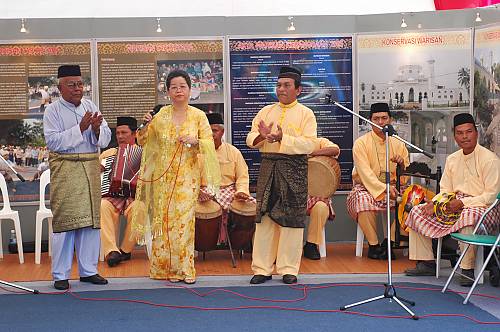A nation’s heritage comprises both natural and man-made features. While natural features are tangible, man-made expressions encompass both tangible and intangible elements.
Examples of natural features include caves, waterfalls, forests, mountains, rivers, and other physical landmarks.
Man-made expressions stem from human thought, creativity, and effort in creating an environment for survival and to celebrate spiritual beliefs. These creations can be functional or aesthetic, depending on their use. Many ancient functional objects are now valued for their uniqueness and rarity.
However, man-made heritage has suffered losses from neglect, genocide (such as that of the American Indians and now in Palestine), and wars that can wipe out entire civilisations.
Natural heritage, too, has been destroyed by disasters and man’s unrestrained lust for profit through unchecked development. Man is both creator and destroyer.
A nation’s heritage is not exclusive to its people but belongs to the world to be appreciated and to understand humankind’s creative and imaginative achievements.
Man-made marvels such as the Egyptian Pyramids, Machu Picchu in Peru, the Acropolis in Greece, the Roman Colosseum, Angkor Wat, and Borobudur offer insight into ancient civilisations. Likewise, archaeological sites such as the Valley of the Kings in Egypt, Delphi in Greece, and the Bujang Valley in Malaysia hold invaluable historical records.
Natural wonders such as the Mulu Caves and the Pinnacles in Malaysia, Niagara Falls in Canada, the Grand Canyon and Yosemite in the United States, Victoria Falls in Zimbabwe, the Amazon, and great mountain ranges like Everest, the Alps, and the Andes showcase the grandeur of creation beyond human capability.
Intangible heritage – rituals, religious expressions, music, dance, ancient tales and lore, embroidery, textiles, and crafts such as pottery and weapon-making – testifies to human ingenuity in meeting physical and spiritual needs.
This intangible heritage is far more vulnerable than the natural heritage, threatened by man’s own destructive tendencies, changing social and cultural environments, intolerance, and unsustainable economic activities.
Recognising these threats – along with the need to raise awareness, especially among younger generations – Unesco adopted the Convention for the Safeguarding of the Intangible Cultural Heritage on Oct 17, 2003. The convention’s aims are to safeguard intangible cultural heritage, respect the heritage of communities and individuals, raise awareness at all levels, and foster international cooperation and assistance.
Malaysia is a state party to the convention. Through the Department of Heritage under the Tourism, Arts, and Culture Ministry, it has complied with Unesco’s directives, identifying and safeguarding intangible cultural heritage at local, national, and international levels, while attempting to balance safeguarding with sustainable development.
There are three phases of intangible cultural heritage:
- Living heritage – still part of community life but less vibrant, with fewer performances or use of traditional skills such as in crafts and textiles.
- Endangered heritage – facing survival challenges and no longer integral to community life, risking extinction without intervention.
- Heritage in memory – no longer existing as living traditions, but preserved in museums, archives, publications, and recordings
Unesco has inscribed the following Malaysian intangible heritage: Makyong (2008), Dondang Sayang (2018), Silat (2019), Wangkang (2020 – with China), Pantun (2020 – with Indonesia), Songket (2021), Kebaya (2024 – with Brunei, Indonesia, Singapore, Thailand), Mek Mulung (2023), and Malaysian breakfast (2024).
The push to have these items inscribed is often treated by officials as the ultimate goal – a mistake, as recognition is only the beginning of safeguarding. True safeguarding requires identification, documentation, research, preservation, protection, promotion, enhancement, and transmission through both formal and informal education.
At present, many inscribed heritages such as Makyong, Mek Mulung, and Dondang Sayang languish in obscurity, appearing only occasionally at festivals or conferences as curiosities rather than as living traditions.
Threats to sustainability include lack of transmission, rapid development and urbanisation eroding cultural ecosystems, lack of recognition and appreciation, external cultural influences, and globalisation. A major challenge in Malaysia is state-level political policies that undermine survival efforts.
The government must be proactive in ensuring the viability and visibility of intangible cultural heritage – activating proper transmission, formal and informal education, and creating an ecosystem and infrastructure for sustainability and growth.
Equally important, communities must take responsibility for safeguarding their intangible heritage.
The views expressed here are the personal opinion of the writer and do not necessarily represent that of Twentytwo13.
Main image: Department of National Heritage, Malaysia.












